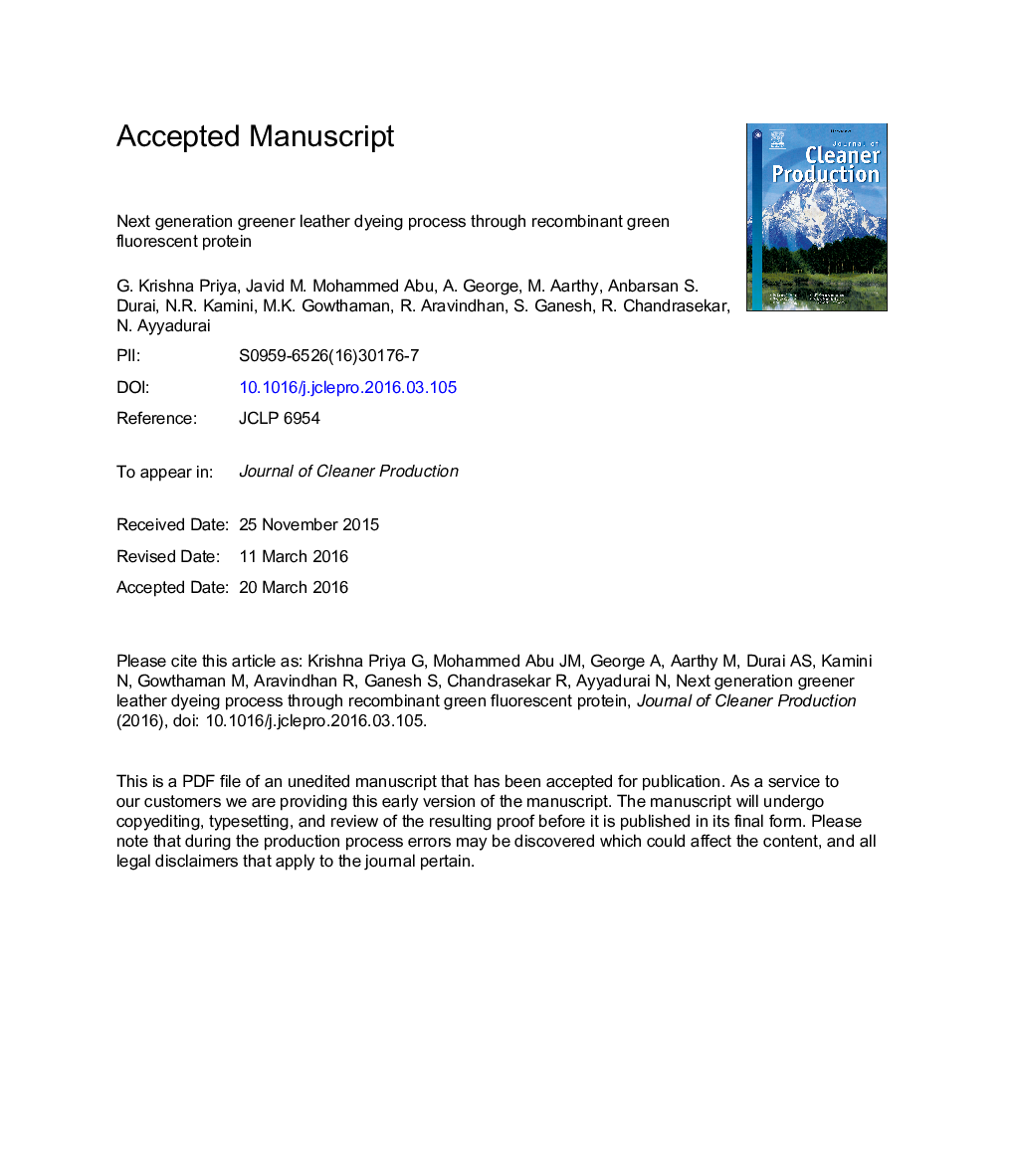| Article ID | Journal | Published Year | Pages | File Type |
|---|---|---|---|---|
| 8102182 | Journal of Cleaner Production | 2016 | 30 Pages |
Abstract
Synthetic dyes are commonly used for dyeing and printing in paper, textile and leather industries. However, some of these dyes cause health hazards and environmental constraints. Currently, development of efficient and inexpensive eco-friendly dyes is of vital importance for dyeing industries, motivating researchers to focus on less toxic and biodegradable dyes from natural sources. The objective of this work is to develop a novel cleaner dye for leather using a green fluorescent protein (GFP) by genetic engineering approach. Specifically, two different charged variants GFP and surface modified GFP (GFPR) were evaluated for the leather dyeing process. These GFP variants were cloned using gene specific primers with restriction enzymes, successfully over expressed in Escherichia coli and purified. Dyeing conditions such as concentration of protein and duration of dyeing were optimized as 5 μM and 4 h respectively. The efficiency of protein binding was estimated through spectroscopic analysis and was around 85 and 96% for GFP and GFPR respectively. The intensity of dyeing and total color difference (ÎE) values from color measurement also indicated that GFP variants can be used as a dye for leather. Further, the characteristics of leather coated with GFP variants was studied using scanning electron microscope, thermal and UV image analysis. From the results obtained, it is suggested that GFP could serve as an environment friendly dye for leather that might reduce pollution load generated by the leather industry.
Keywords
Related Topics
Physical Sciences and Engineering
Energy
Renewable Energy, Sustainability and the Environment
Authors
G. Krishna Priya, M. Mohammed Abu Javid, A. George, M. Aarthy, S. Durai Anbarasan, N.R. Kamini, M.K. Gowthaman, R. Aravindhan, S. Ganesh, R. Chandrasekar, N. Ayyadurai,
